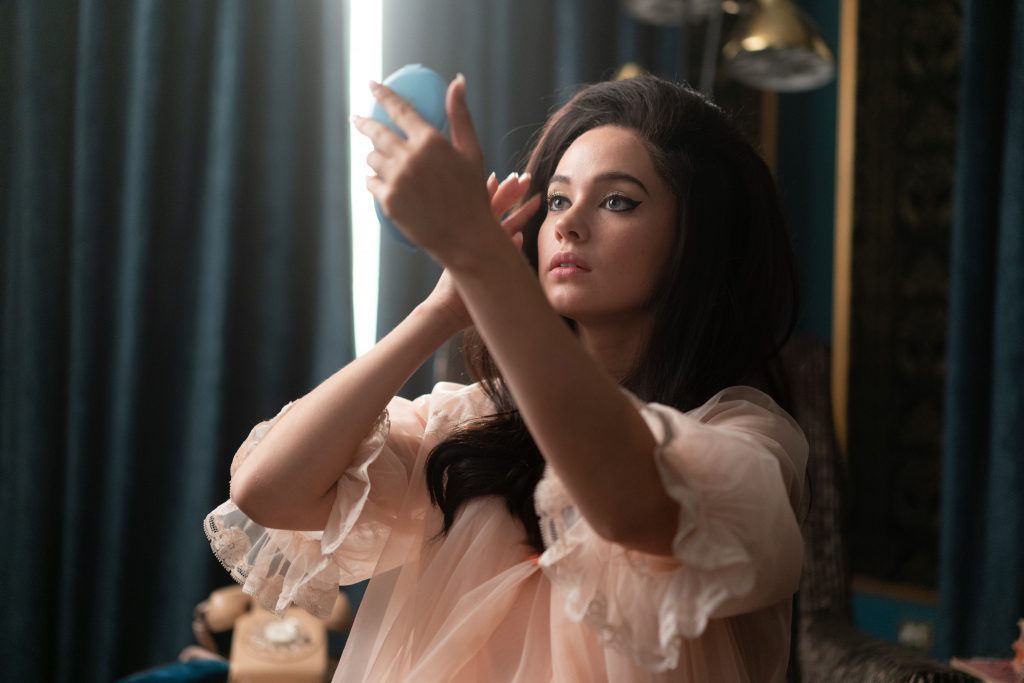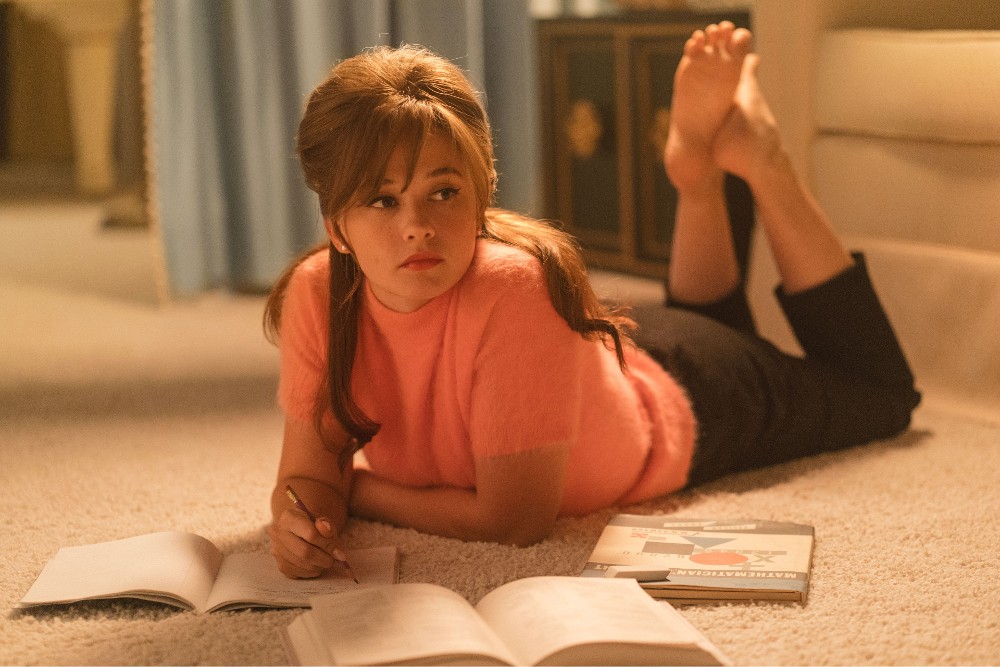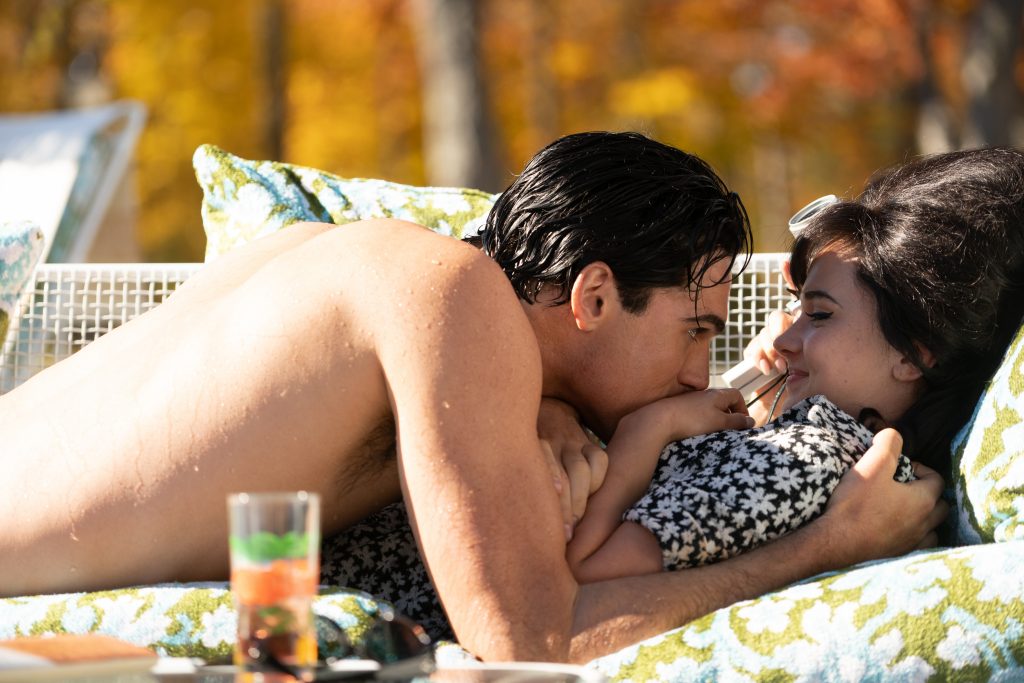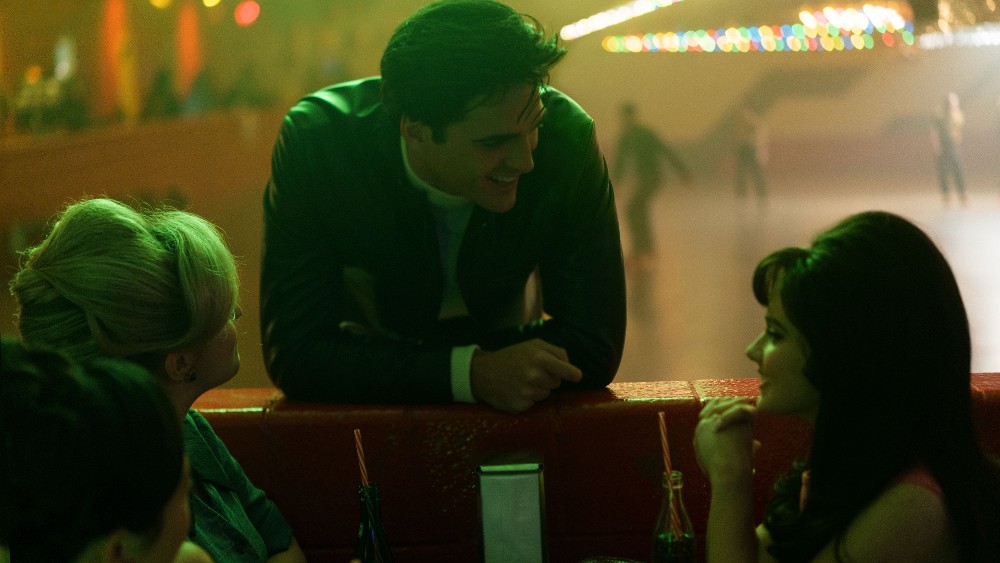
With a Sofia Coppola film, fans expect to follow a character slightly lost. Whether it’s the isolating nature of a home, a city, or the world itself, Coppola consistently captures that isolation in her films, bringing audiences intimately close to her characters’ depression or pain. And, of course, their joy.
In simpler terms, Coppola and cinematographer Philippe Le Sourd master the art of crafting both escapism and perspective.
Over the past few years, the director and her DP have delved into varying environments, exploring similar characters and themes. In their latest collaboration, Priscilla, they once again follow character in search of self-discovery while adrift at sea. In this A24 release, Elvis Presley is the sea—sometimes enchanting, often dangerous.
For first digital production, Coppola and Le Sourd have retained their signature tangibility. Recently, the cinematographer shared with Below the Line how they did it.
Below the Line: Did you and Sofia Coppola use many photos as visual references that Priscilla sent over to production?
Philippe Le Sourd: Yes. When you go to the subject like that, everybody looks from some image at this time and period. Even the subject is the biggest rockstar of the 20th century, and you have a Baz’s movie before, so for sure you find some nice picture. You look all over the place, especially you have some scene you have to duplicate. The film was fighting with a budget, so you need to find a solution to make sure it feels real and right for the scene.
BTL: How about the shot of Elvis performing on stage? Just that one shot alone, that’s all you need of him performing.
Le Sourd: Because Sofia was struggling at the beginning [with budget], she needed to cut probably 10 or 15 pages, and this one was of the scenes she to cut because we don’t have any money to shoot Elvis on stage. I found an old picture of probably a rock star or the jazz musician backlight with one light, and I say, “Oh, perhaps this one we’ll make it.”
It was a set on the same place where we shot Las Vegas. The casino is the same place we shot the movie theater. It’s where we shot the restaurant at the end, too, so it was four or five sets in the same theater. So, we shot there and it went well. We asked [the production designer] Tamara to design full life for the floor and we had only 20 or 40 extras and asked some flashbulbs.
BTL: It’s one of the few moments outside of Priscilla’s perspective. What were your initial conversations with Sofia about how you wanted the present her point of view from the age of 15 to 27 and how it evolves in the movie?
Le Sourd: I think she wrote a script based on the book, but she wrote a script that intimately she knew how she wanted to make it. Most of the work is about women. So if you look Marie Antoinette, if you look Lost in Translation, she felt very connected with the character.
We have always a long conversation with Sofia on pre-production about the movies, the script, the scenes, the language we want to create, the intimacy of it, the number of shots because it’s always a challenge to shoot on six week a movie on the 20 page. Five days a week, it’s not a lot.
You combine a lot of things together and you need to be very efficient without working with more than one camera, without a huge budget. So it’s always challenging for both of us to make sure that could work and make it under edit.

BTL: Were you mostly just using one camera throughout production?
Le Sourd: One camera, yeah. She prefers to sit with one camera because she feels more connected to the character. Most of the movie is about her, and most of the time, it’s her in one shot because she doesn’t over-do it. She doesn’t feel that she need to create a world with 10 shots. Simplicity is the movie.
BTL: Did you also both want to shoot and light Graceland like a dollhouse?
Le Sourd: When I read the script, we have this conversation. I said to her, “You are always writing the same story,” but it’s a joke of course. I’d say, “What’s happened to you, Sofia?” That’s utter point of view about how she felt if she felt connect with the character, so why not?
How we talked about Graceland, she didn’t talk about it that way. She said, “Oh, I want to be a very sunny like a dream.” And I was thinking, “Great.” It’s very hard for me to make it very sunny because I didn’t quite connect with something very sunny.
When you read the story, I say, “No, this is a nightmare. Here’s a 14 year old girl going with a man, a super rockstar.” Imagine I have four kids, three daughters… imagine. I say, “Okay, you’re going to bring your daughter to the most famous star in the world.” So it’s about the question as a cinematographer how to tell the story and how you to make sure you understand that with the light.
BTL: Parts are horrifying, but you do still show how it plays from Priscilla’s point-of-view. I mean, that shot of her and Elvis together and literal fireworks going off behind them…
Le Sourd: But that was simple. I think it’s a very good scene, and Sofia wanted the kiss at the end in silhouette. Sofia, she’s very romantic. In general, she’s very shy. So, you have a kiss as something a bit, not abstract, but poetic and also silly. It’s about fun. So on this one scene, we put two cameras to grab different elements because a lot of energy is there.
BTL: Was that the only sequence you shot with two cameras?
Le Sourd: I think we shot this one and one at the swimming pool because a swimming pool, you try to imagine this swim is supposed to happen in Nashville and we shot it in Toronto end of October.
We found a swimming pool, and luckily, it was nice weather and it was okay, so let’s shoot with two cameras. It was a super 16 camera. And are we doing a digital camera? Let’s try that.

BTL: Is this the first time you and Sofia have shot in digital together?
Le Sourd: That was the first time, yes. It was fantastic. I could sleep better. That don’t mean I don’t sleep well in film, but I’m always concerned. It’s fantastic because you see what you you’re doing and you discover, you challenge, you change, you try, and you explore, because you have more flexibility and you react right away to the monitor. So it’s a fantastic object to create a movie
BTL: What was your experience with 16mm on the film? What did you want to achieve with it?
Le Sourd: We shot a few scenes with 16, and there’s something very melancholic about it. For the wedding scene, I say, “Oh, let’s shoot with the 16.” Even the quantity of light you need between a film stock and digitally is completely different. But that’s something beautiful and nostalgic and the grain.
You can see the people react differently when you shoot with the small camera. I shoot a Bolex camera. I shoot the smallest one, more edgy with a bad lens; you feel more intimate and you feel the reaction with the actor with a smaller camera is different. You feel more freedom, you feel more intimacy about it compared to the digital camera.
It’s something very interesting to explore. If you shoot, for example, a full movie with a Bolex or iPhone, the relationship you create between actor and the camera is completely different.
BTL: As you said, Sofia is shy, but I imagine she’s not shy about what she likes and doesn’t like, right?
Le Sourd: When she don’t want something, for sure she’s not shy about it, but once she wants something, she put a step on it. But she’s open if you have a better solution, if you have better idea, she will listen to you.
BTL: Testing is one of your favorite parts of the process. What did you especially enjoy testing with Sofia?
Le Sourd: Sofia and me would say, “We never shot to digital together. I never shot digital on a movie. How are we going to translate that and to make sure we love it?” It was not about copying film, I don’t think we can compare it, but it was to make sure it fit to the story and to the film and doesn’t feel technically too digital, too shiny, too crispy, but nostalgic. And not to be nostalgic because you don’t want the audience going, “Oh, we are watching a movie shot in the sixties.”

BTL: Given the tonal shift, how’d you approach the second half of the film differently?
Le Sourd: I think the emotion of the scene give you a direction. The color of the set give you a direction, the cast give your direction, and you could have a strong idea or idea. Day by day, when you shoot a scene, you could change your mind. I say, “Perhaps tomorrow I will try something that direction…” Or perhaps at the end of the week when you think about everything you shot, you see probably it’s interesting to try that direction.
Especially the end, we shot all that at the end of the movie, so you knew already what type of film you had and how was the character and how was Elvis with her. So, I tried to bring on that direction and with a light, this idea of gel of evolution and loneliness. I try to connect the light with the story.
BTL: One of the shots that defines the movie for me is when Priscilla’s on the front lawn of Graceland and you see that gate slowly closing from a distance.
Le Sourd: Yes. It was something that Sofia waned to do strongly from the beginning, and also, it’s even like the shot we did inside the car. I wish the shot could be longer, it was the end of the road. We couldn’t go longer. But when you watch a movie, you want to stay with her. You want want distance, step forever this moment because it’s very emotional.
BTL: Did you ask Sofia, what do you want to make the audience feel with this final shot?
Le Sourd: I think it’s about the character. What the audience feels, I don’t know. When I frame an actor or scene, when I bring light to the scene, what could the audience feel about it? I think it is a connection you could have with the actor, the director and yourself. You hope that is the translation and your feeling. You bring it to the light, you bring to the frame that would translate emotionally to the audience. You never know.
Priscilla is now playing in theaters.





